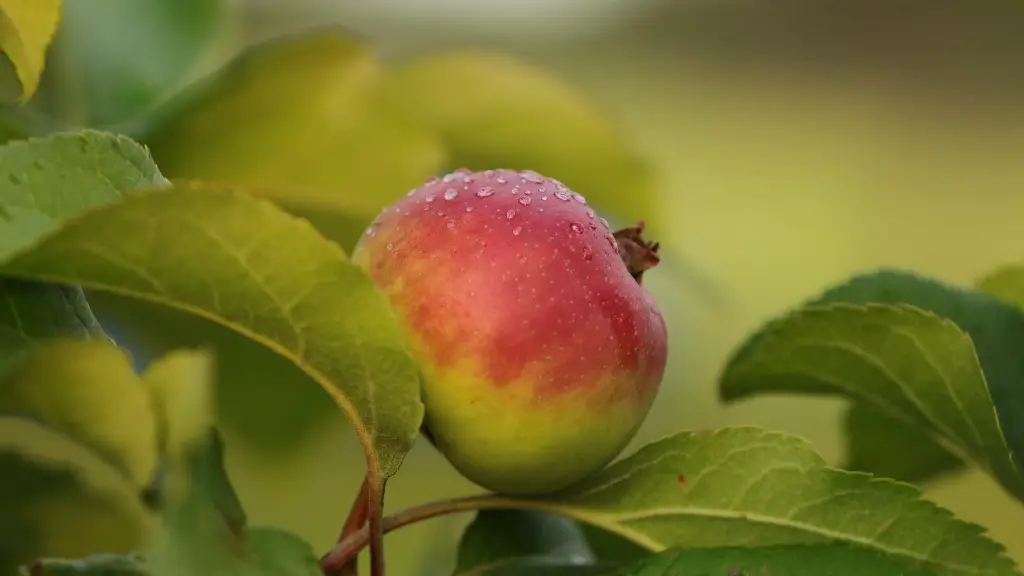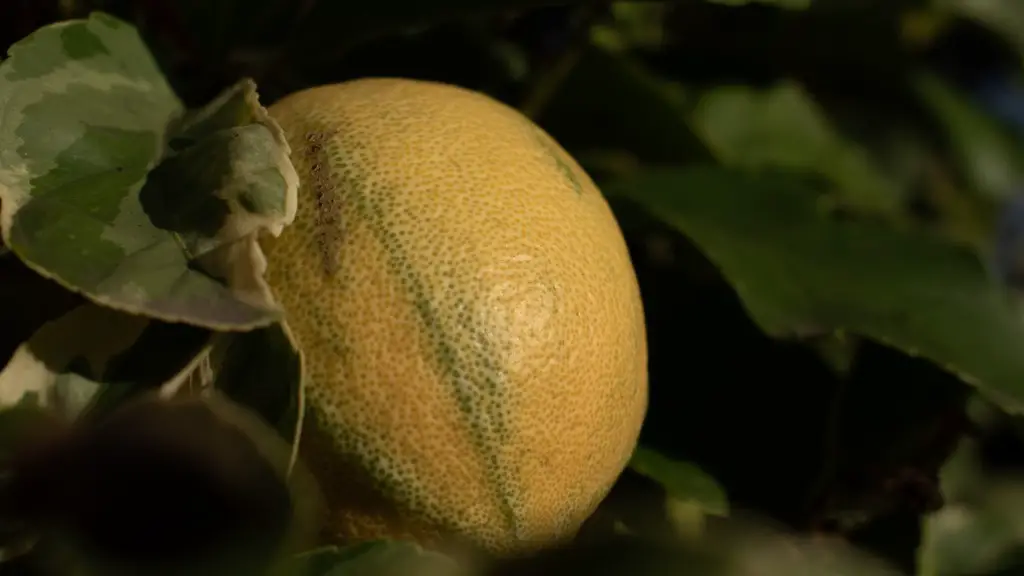The avocado tree is a beautiful, flavorful, and increasingly valuable fruit crop, and growing your own can be a great way to enjoy a steady supply of avocados and make a nutritional showing in your yard. Here’s how to grow your own avocado tree from seed and reap the benefits of this delicious fruit.
Step 1: Prepare the Seed
The very first step is to prepare the avocado seed. First, remove any outer flesh of the seed. Then, look closely at the tip of the seed and identify a small “eye” – this is where the roots will grow from when the avocado begins to sprout. Cut or scratch away any papery, tan-colored skin covering the eye. Once it is exposed, the seed is ready to be planted.
Step 2: Plant the Seed
In order for the avocado seed to germinate and grow, it will need to be planted in soil or potting mix. Though it is possible to plant the seed directly in soil outdoors, it is highly recommended to start the seed indoors in a pot. Fill a pot several inches deep with moistened soil, and place the planted seed an inch deep in the soil. Wrap the pot with plastic to maintain the moist environment and place it in a warm area, such as an indoor windowsill.
Step 3: Water and Monitor
During germination and growth, it’s important to keep the soil either moist or damp but not soggy. Monitor the soil moisture during this period – the seed may need to be watered a few times a month. After a few weeks, the seed should begin to sprout and new leaves will emerge from the eye of the seed.
Step 4: Transplant
Once the tree reaches about 6-7 inches in height after several weeks, it is time to transplant it. Choose a sunny spot in your yard that receives at least 6-7 hours of direct sunlight a day, and dig a hole that is half a foot deep. Place the tree in the soil and cover the root system with soil. Water the tree thoroughly after transplanting and water once per day for the next two weeks.
Step 5: Prune and Fertilize
As the avocado tree begins to grow, it is important to begin pruning and fertilizing the tree. Pruning can be done with sharp shears, and it involves cutting away dead or diseased branches and leaves. Fertilize the tree lightly every few weeks with a balanced fertilizer such as 10-10-10 or 8-4-4. Make sure to follow the instructions on the fertilizer to ensure that the tree is getting the proper nutrition.
Harvesting
Avocado trees may take several years to reach maturity and start yielding fruit. When the tree is ready to be harvested, there will be an abundance of flowers in the springtime followed by the fruit beginning to grow. If the avocado is ripe, the skin will be a dark green color, and the fruit will come off easily when picked. If the fruit is slightly green, it’s best to let it ripen off the tree.
It’s a good idea to inspect trees frequently for signs of disease and insect damage and act quickly to address any problems. Wooden stakes and wires can also be used to support larger trees as they mature.
Health Benefit
Avocados are packed with essential vitamins and minerals, including potassium, calcium, and vitamin C. Eating avocados can help reduce cholesterol levels, lower triglycerides and improve overall heart health. Avocados are also a great source of fiber, antioxidants, and healthy fat, making them excellent for maintaining a healthy weight. In addition, avocado oil can help soothe inflammation, increase collagen production, and reduce wrinkles and signs of aging.
Not only are avocados delicious, they also provide a host of health benefits that are worth considering when growing your own tree. Despite the long wait until harvest, the health benefits make it more than worth the effort.
Advantages of Growing Your Own Tree
One of the biggest advantages of growing your own avocado tree is that you can control the quality of the fruit. By controlling everything from the soil and the water to the fertilizer and pest control, you are better equipped to make sure that you are only harvesting high quality fruits. This is particularly beneficial if you plan to eat the fruit yourself. Additionally, growing your own tree is significantly cheaper than buying avocados from a store or even from a farmer’s market.
In addition, growing your own tree will help reduce your environmental footprint. You will get your avocados without having to worry about the environmental cost of transportation, shipping and the many other forms of environmental pollution associated with buying imported fruits. Plus, you can enjoy the fruits of your labour once the tree starts producing.
Maintenance and Care
Avocado trees need a high amount of rainfall and humidity in order to flourish in a tropical or subtropical climate. If you’re living in an area with cooler temperatures, you may need to supplement with additional watering. It’s important to monitor the soil moisture to make sure your tree gets enough water, but not too much. If the soil is too wet, this can cause root rot and other fungal issues. Additionally, be sure to keep weeds away, as they can compete with the tree for nutrients and water.
Regular pruning and trimming is also necessary to keep your avocado tree healthy and thriving. Prune away any dead branches and monitor for signs of disease or insect damage. Regular fertilization with a balanced fertilizer can help keep the tree healthy and strong.
Pests and Disease
Avocado trees can be prone to pests, so it’s important to be vigilant and take precautions. Common pests include aphids, thrips and scale, as well as disease-carrying insects such as mites and whiteflies. The best way to prevent or get rid of such pests is to keep the area around your tree clean by removing dead leaves and branches, and spraying the leaves with a water-based horticultural oil if necessary.
If you spot signs of disease such as wilting leaves or discoloration, it’s best to act quickly and determine the cause. Common avocado tree diseases include root rot and anthracnose, and these can be treated with fungicides or bactericides. If you’re not sure what the problem is, it’s best to contact a professional for help.
Ongoing Maintenance
Maintaining an avocado tree means caring for it at all stages of its lifecycle. When your avocado tree is mature, keep it watered and fertilized regularly, as outlined above. Prune away dead branches and foliage, and inspect the tree regularly for signs of disease or insect damage. Additionally, keep the tree well mulched – this will help retain soil moisture and add essential nutrients.
It also helps to periodically apply a micronutrient fertilization to keep the avocado tree in top condition. Micronutrients such as zinc, iron, and manganese can help bolster a wide range of tree functions, including root development and fruit production.
Enjoy the Fruits of Your Labour
As long as you take the time to care for and maintain your avocado tree, you will be rewarded with a steady supply of delicious avocados. Growing your own avocado tree from seed is a rewarding experience and can give you the satisfaction of direct involvement in the entire process, from seed to ripe fruit.



